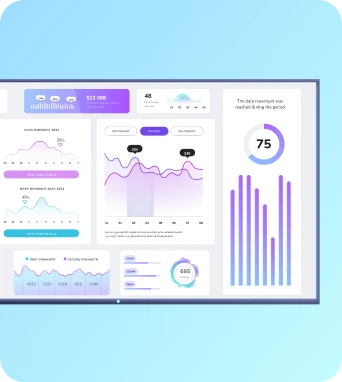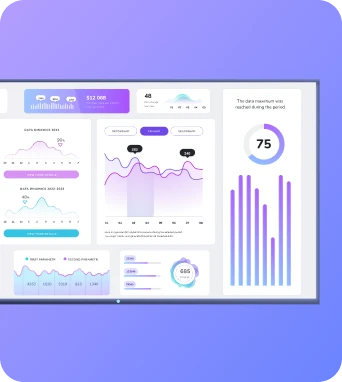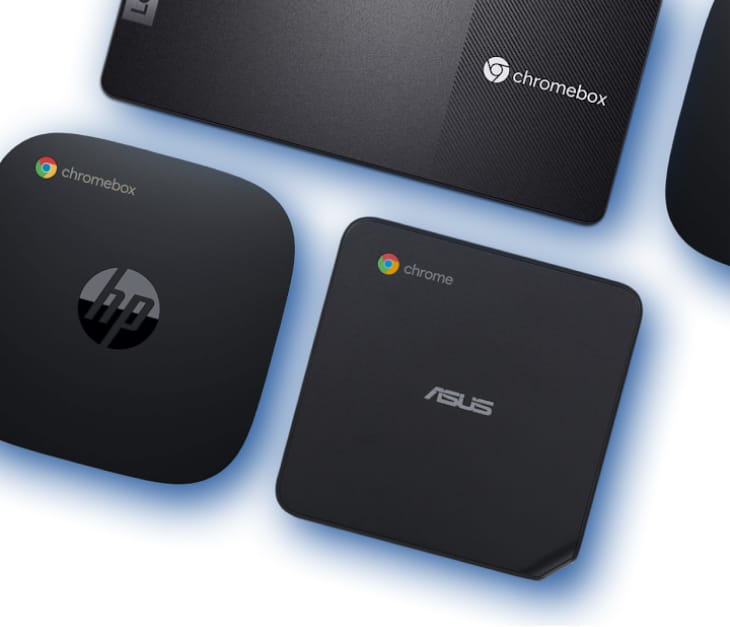If you reflect on the past 20 years of digital signage, you’ll see it was mostly designed for big enterprises with even bigger wallets.
No more, we say.
That's why we believe ChromeOS is hands down the best system for digital signage.
We’ve worked with a lot of operating systems over the years, but none have the democracy, security, power, or control of ChromeOS. This means on-premise solutions, no more gatekeeping prices, and no more stressing about viruses and ransomware (seriously).
Want proof? Coming right up.
Here’s why we love ChromeOS for digital signage
You’re probably used to seeing awesome digital displays these days. They could be at a store, in a museum, or at a special event — but they’re probably not at work.
And that’s a shame.
See, we believe businesses should be able to harness digital signage without buying multimillion-dollar equipment (or unreasonably expensive software).
That’s why we’ve spent the last several years building signage solutions for TV screens.
And thanks to ChromeOS, they’ve become powerful tools to communicate with workforces.
Here are just a few reasons why we’ve fallen in love with ChromeOS:
- Fugo is a Google Cloud Partner, which means we’re vetted and qualified to build products that work on top of Google Cloud. Our digital signage software runs on ChromeOS (we talked about this more at ISE 2024)!
- ChromeOS manages everything from the cloud. We’re a big fan of cloud-based everything.
- Hardware acceleration in Chrome devices means you can render rich content without breaking a sweat. But since ChromeOS works on PC or Mac, you can still manage your signage directly from the cloud.
- It’s a bulletproof system against cyberattacks. ChromeOS security is truly second to none.
But you don’t have to take our word for it. . .
Here’s why YOU should love ChromeOS for digital signage
We could talk all day about Fugo x ChromeOS (literally), but that’s not what this is about.
We want to show how much more you can do with digital signage when it’s married to ChromeOS! And we’re going to do it in five minutes or less.
So enough about us — here’s why your business will love using ChromeOS in its digital signage program.
It’s secure
Like, really really secure.
As in, it’s (so far) virus-free.
Since ChromeOS got its start in 2011, there hasn’t been a single virus recorded. Ever.
It’s scalable
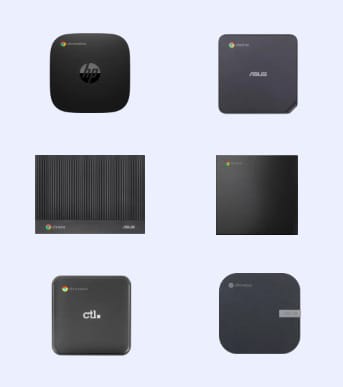
With ChromeOS Flex, you can enroll hundreds of devices at the same time. Scaling has never felt so good, or frankly, so time-efficient.
ChromeOS Flex is also compatible with many different devices, even if they have ancient (or now unsupported) operating systems:
- Mac Minis
- Macbook Pros
- ASUS machines
- HP Notebooks
- Probooks
- Intel ComputeSticks and NUC
- Lenovo Thinkpads
- Microsoft Surfaces
- LGs
- Panasonics
- And the list goes on
Another point for scalability? The operating system is cheaper overall. ChromeOS Flex consumes 19% less power than other systems, which means every five installations equals a whole other OS.
Getting more to save more? Now that’s what we call value!
It’s integratable
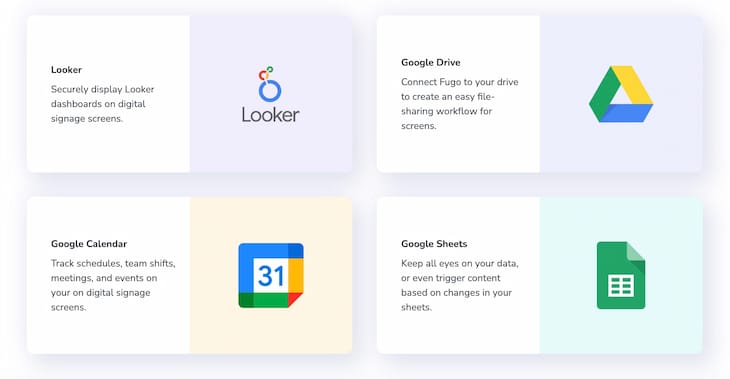
ChromeOS integrates seamlessly with Google Workspace, which means you can link dozens of platforms into a single source of truth.
Does this mean you can connect with your Google calendar and favorite news platforms?
You betcha.
But it also means you can share business intelligence safely, securely, and in real time.
Let’s say you’re connecting your Looker account to a conference room TV screen. With Fugo plus ChromeOS, you can create a living dashboard that refreshes every 10 minutes. Now, you can celebrate wins as a team and keep tabs on campaign progress.
Say goodbye to viewer licenses, security risks, and static dashboard screenshots.
It’s simpler

By ‘simpler,’ we mean easier to run, update, install, and manage.
There are way too many points to cover here, but here’s a high-level overview to wet your whistle:
- You can pre-configure apps to auto-start for you, saving tons of time for your team.
- You can remotely manage all your devices. It really can be that easy.
- Every organizational structure can get its own independent settings and rules. Yes, multi-location business owner, we’re looking at you.
And remember how ChromeOS updates in the background? No more surprise shutdowns in the middle of a meeting!
How to connect Fugo to ChromeOS
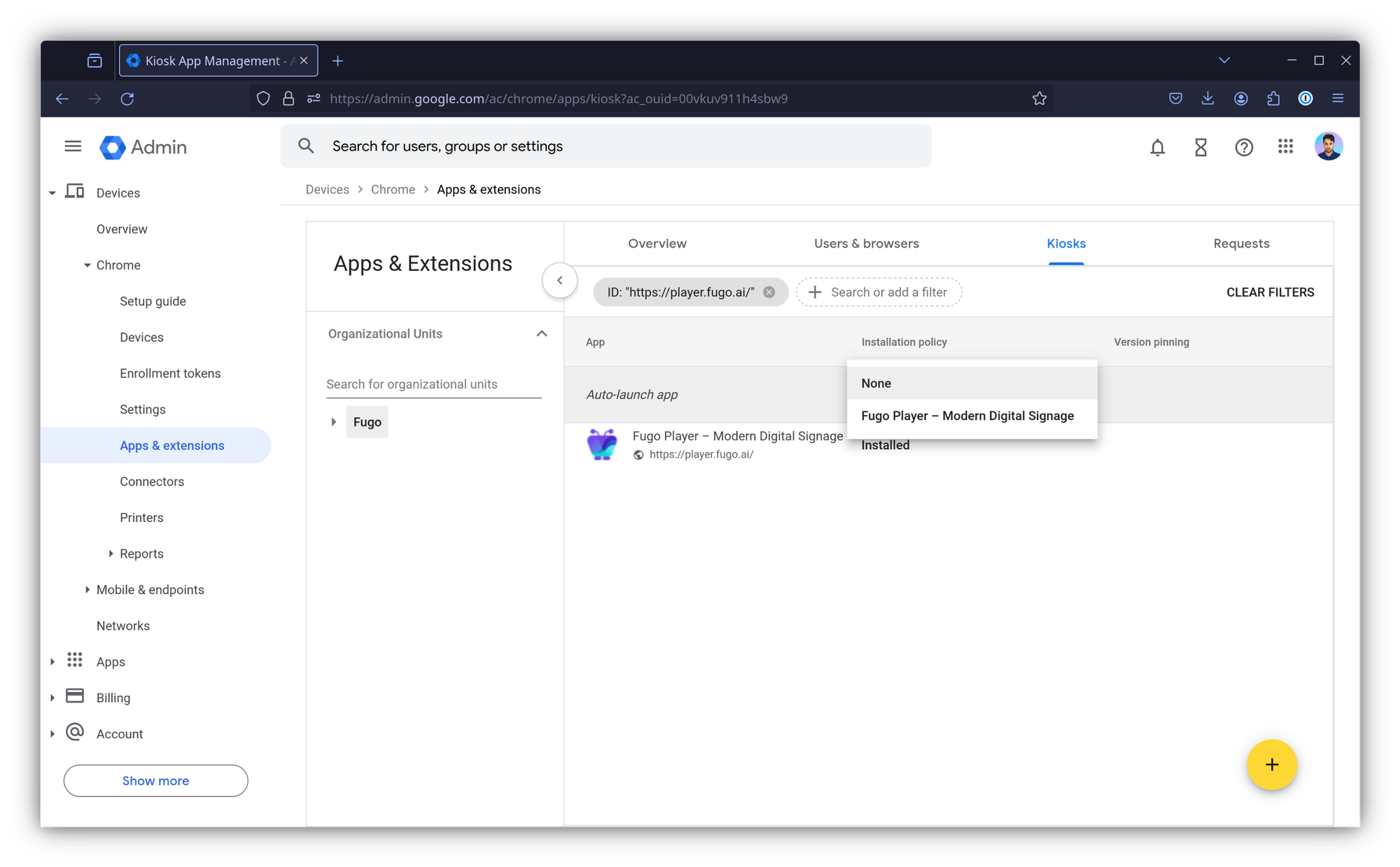
Getting excited about ChromeOS?
The good news is, it’s easier than ever to get connected.
So! Here’s how to install Fugo on your ChromeOS device:
- Set up your G-Suite. This will cost between $6 and $12 per month depending on the plan you want.
- Buy Chrome Enterprise licenses through a Google partner. This costs just $25 per device per year (as of the time of writing).
- Under Chrome device management, set up Fugo as a kiosk app. You can do this in your Google Admin Console by clicking Devices → Chrome → Apps & extensions → Kiosks.
- In the bottom-right corner of Kiosks, click the Add by URL icon. Paste https://player.fugo.ai into the space provided, then click Save.
- Set the newly created ‘React App’ (that’s us) to auto start.
- Enroll your device(s) in Chrome or wipe the device if you’ve used it before.
- Pair your device with Fugo CMS. You can still do this during our 14-day free trial.
- It’s finally time to share content to your screen! This could be TV dashboards, employee engagement pieces, or anything else you can dream up in our design studio.
For the full rundown and step-by-step process, check out our guide to installing Fugo on ChromeOS.
We'll only be going deeper with ChromeOS
The key to powerful digital signage is having strong support for web functionality on your devices. This is where ChromeOS outshines most other operating systems. It’s specialized for web apps like Fugo and countless other Google Workspace integrations.
For Fugo, a tight integration with ChromeOS is imperative for future-proofing our product. As we continue to build features that push the boundaries of workplace screens, we feel confident knowing that ChromeOS will keep up.
What we hope this means for you (and us!) is that we can go even deeper with digital signage technology. We’re looking forward to unlocking more ways to use screens and reimagining the ways we communicate at work.
Related:


